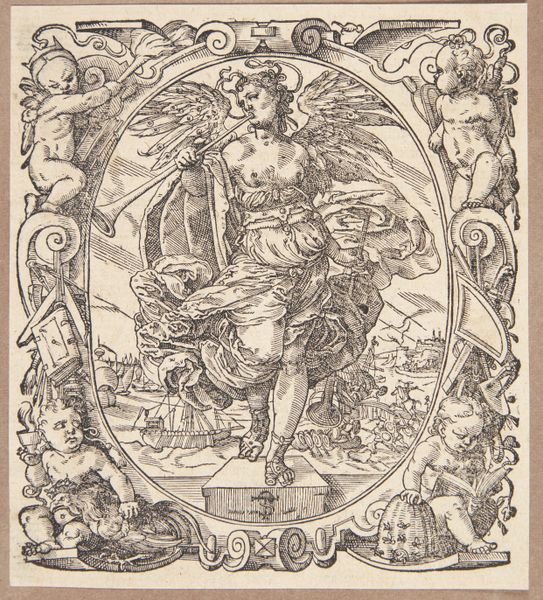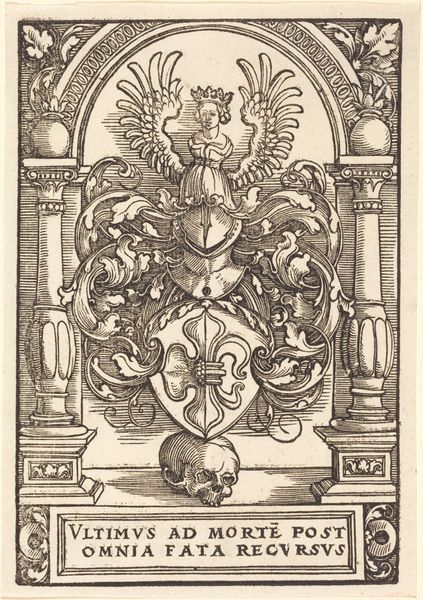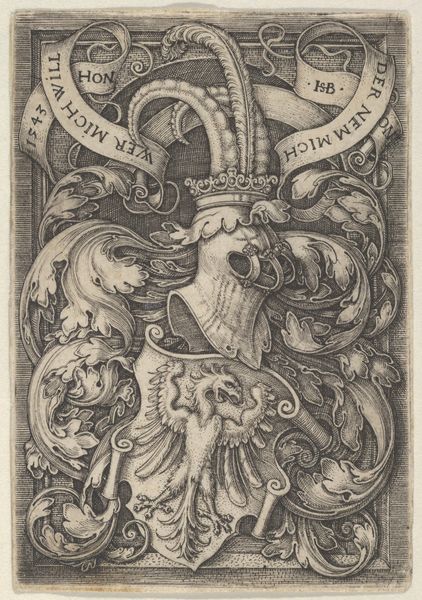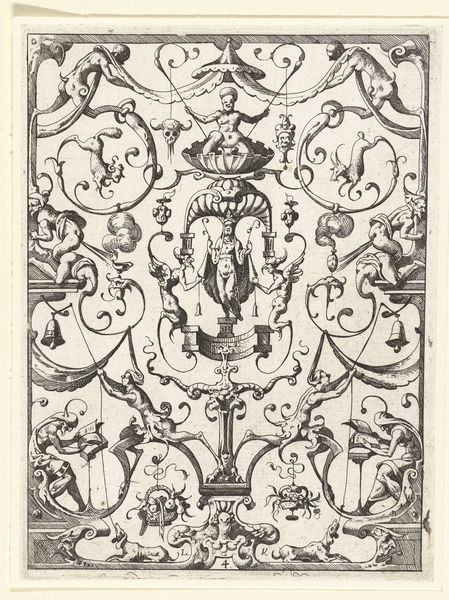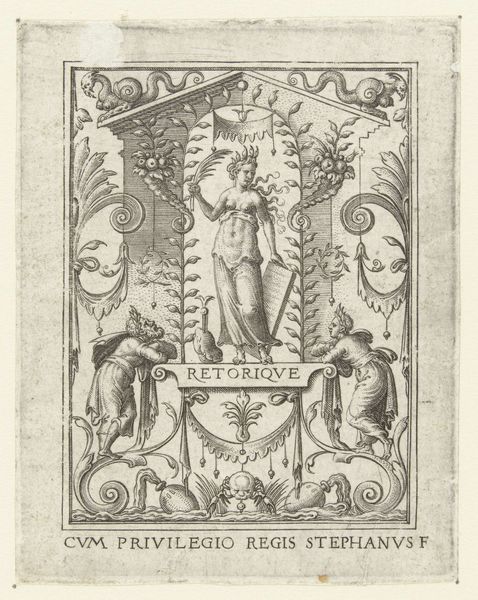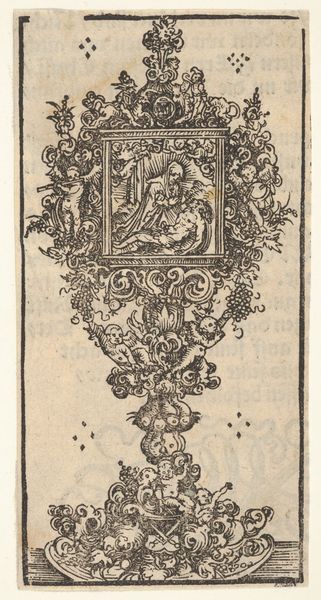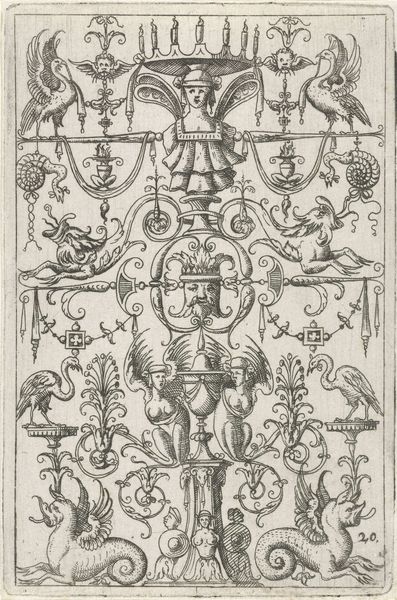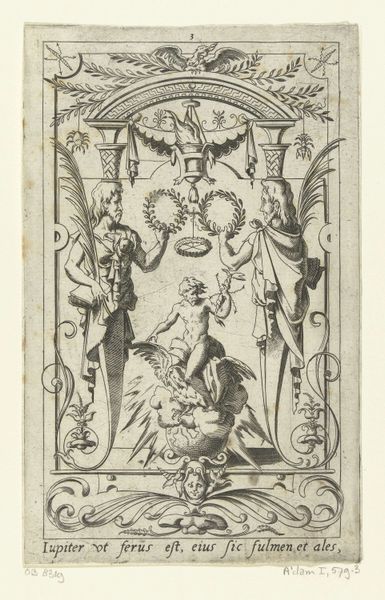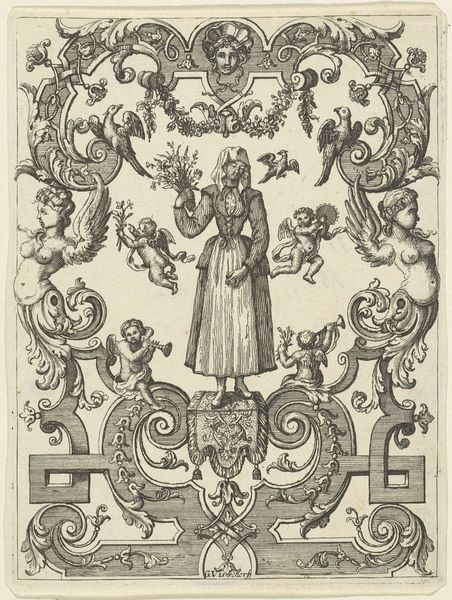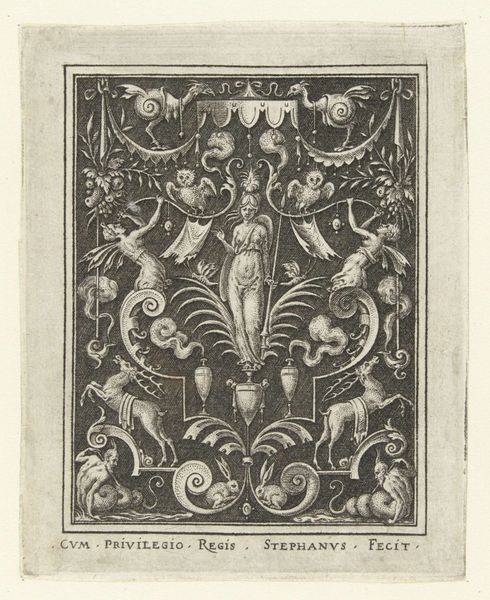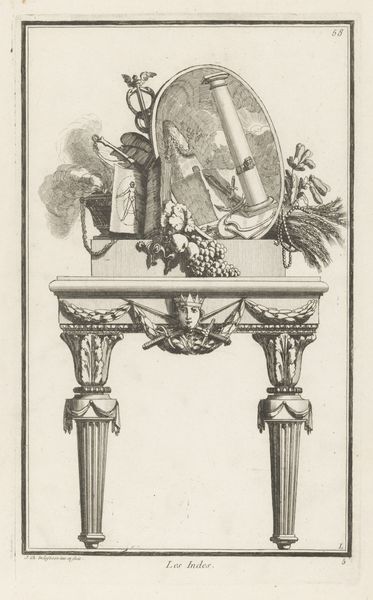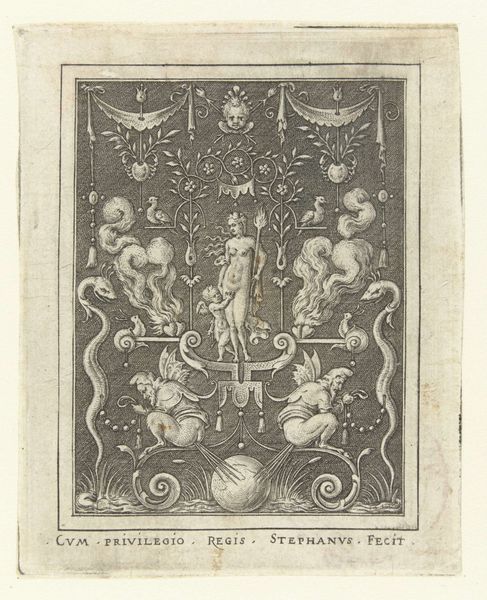
Dimensions: sheet: 11 x 7 5/8 in. (27.9 x 19.4 cm)
Copyright: Public Domain
Editor: This is Albrecht Durer’s "Arms of Michel Beheim," created sometime between 1485 and 1528. It's an ink drawing and woodcut print. What strikes me is the heraldic imagery - so precise and stylized. What's your take on it? Curator: Well, the heraldic tradition itself is deeply symbolic. Look at the eagle, a very potent symbol. It embodies power, vision, and authority, harking back to Roman imperial iconography and persisting through centuries as a marker of sovereignty. Doesn’t it remind you of something? Editor: Now that you mention it, the eagle does suggest strength and status. How does that relate to the rest of the composition? Curator: The escutcheon is also significant. The wave or bend across it often signified the family's connection to water or trade routes. These symbols worked as visual mnemonics, solidifying cultural memory. Editor: I hadn’t considered the water route connection, so it reveals details of Michel Beheim’s identity! Is this a form of portraiture through symbolism? Curator: Precisely. Instead of depicting the person, Durer provides access to Michel Beheim’s place in society and his family’s history, transforming personal identity into a cultural artifact. Editor: This changes my understanding. I was focused on the style but missed the layered meanings within. Now it seems to offer insights into both artistic trends and social identity. Curator: And it highlights the power of images to encapsulate and transmit history and identity across time. Editor: Definitely, I’ll look for these details in similar pieces now. Curator: Excellent. It’s a worthwhile hunt, I assure you!
Comments
No comments
Be the first to comment and join the conversation on the ultimate creative platform.
